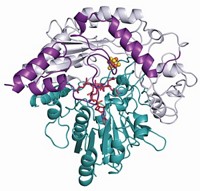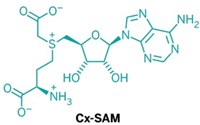Advertisement
Grab your lab coat. Let's get started
Welcome!
Welcome!
Create an account below to get 6 C&EN articles per month, receive newsletters and more - all free.
It seems this is your first time logging in online. Please enter the following information to continue.
As an ACS member you automatically get access to this site. All we need is few more details to create your reading experience.
Not you? Sign in with a different account.
Not you? Sign in with a different account.
ERROR 1
ERROR 1
ERROR 2
ERROR 2
ERROR 2
ERROR 2
ERROR 2
Password and Confirm password must match.
If you have an ACS member number, please enter it here so we can link this account to your membership. (optional)
ERROR 2
ACS values your privacy. By submitting your information, you are gaining access to C&EN and subscribing to our weekly newsletter. We use the information you provide to make your reading experience better, and we will never sell your data to third party members.
Biological Chemistry
Single mutation transforms enzyme's function
August 28, 2006
| A version of this story appeared in
Volume 84, Issue 35
By making a single amino acid change in an enzyme, researchers have completely changed the class of reaction catalyzed by that enzyme. Guided by the predicted mechanism of action of arylmalonate decarboxylase, Hiromichi Ohta and coworkers at Keio University, Yokohama, Japan, find that mutation of one residue in the enzyme converts its catalytic activity from enantioselective decarboxylation of α-aryl-α-methylmalonates to racemization of α-arylpropionates (Chem. Commun. 2006, 3600). This is not the first time an enzyme's activity has been modified by a single amino acid change. But Per Berglund of Sweden's Royal Institute of Technology, in Stockholm, who carried out one of the earlier efforts, says the Japanese study "is still an extremely nice example of creating a new activity in an enzyme by carefully studying the reaction mechanism." He notes that such changes usually involve reinforcing an enzyme's existing side reaction, while this study shows that the capability for the new reaction does not have to be present at all in the parent enzyme.





Join the conversation
Contact the reporter
Submit a Letter to the Editor for publication
Engage with us on Twitter